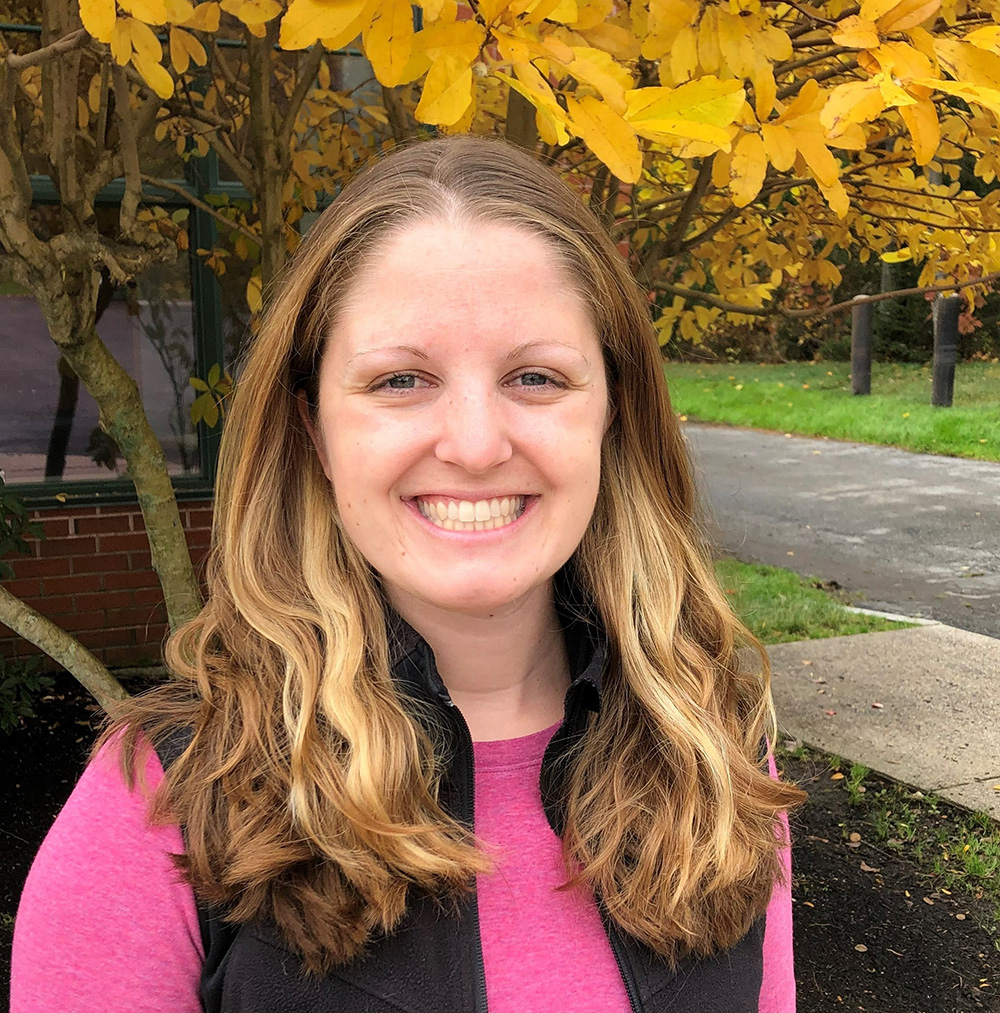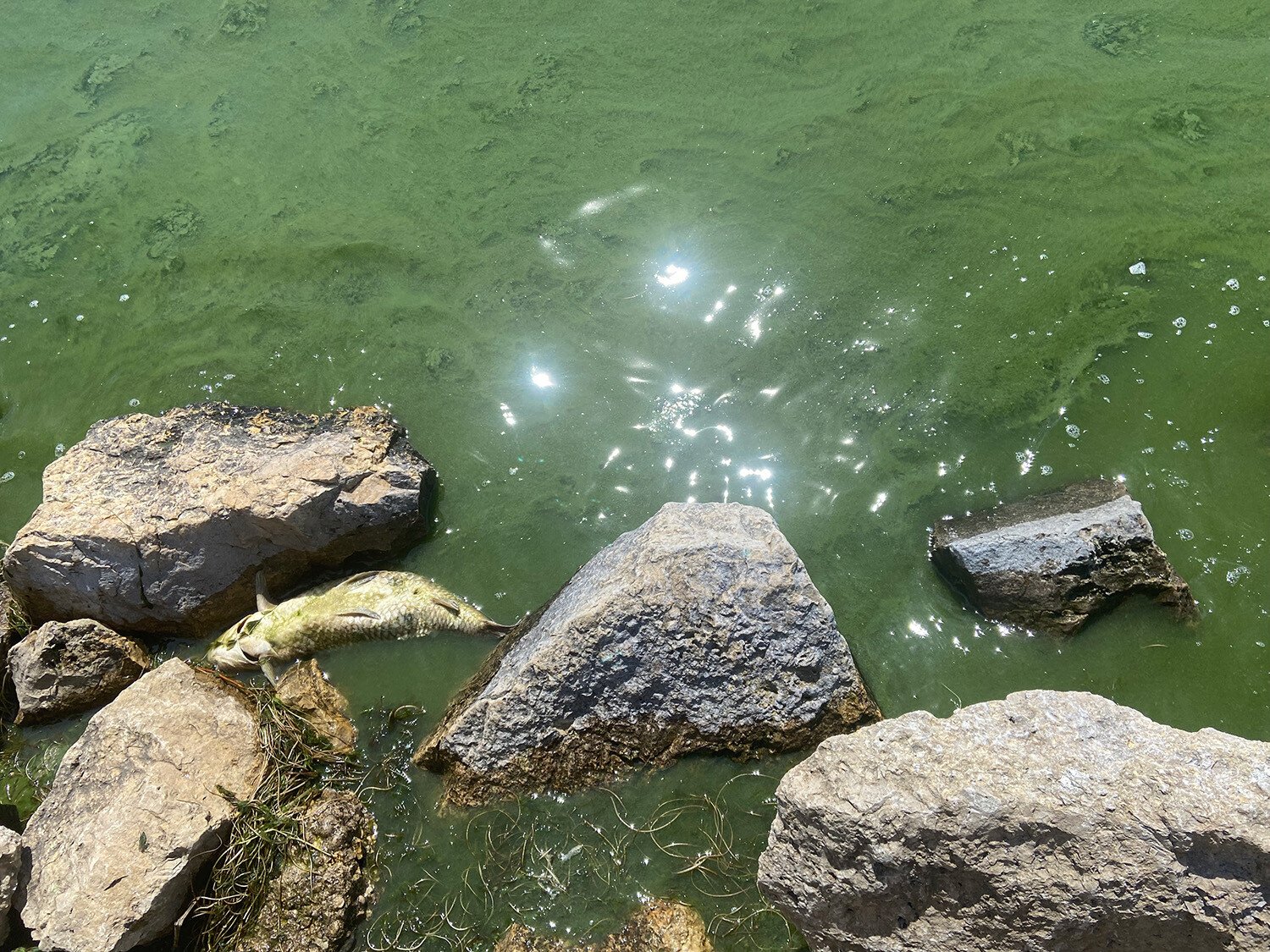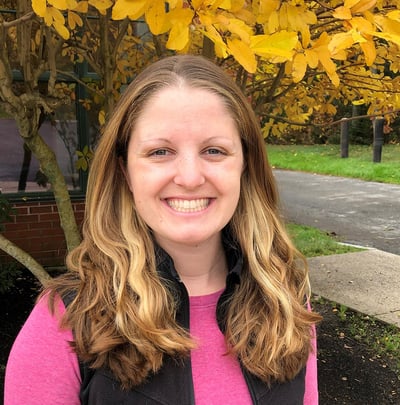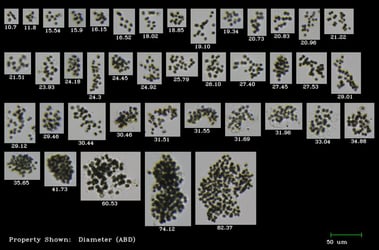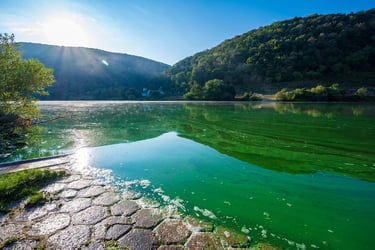What better location for a meeting of limnologists than a city sandwiched between two lakes: Madison, Wisconsin. Madison was the perfect backdrop for this year's summer ASLO meeting, which drew hundreds of participants to share their research on freshwater aquatic ecosystems and climate change.
Water Quality Issues in Lake Monona
Anyone who has ever visited the FlowCam booth at a conference knows that we love to collect samples from local water bodies and analyze them live in our booth. This conference was no exception, but this time there was an active algal bloom occurring!
Pictured above: The algal bloom on the edge of Lake Monona, just outside the ASLO conference hall. If you look closely, you'll see a dead fish among the rocks.
 Pictured left: FlowCam’s Water Markets Manager, Polly Barrowman, collecting a water sample using a plankton tow net.
Pictured left: FlowCam’s Water Markets Manager, Polly Barrowman, collecting a water sample using a plankton tow net.
The sample we took from the visible algal bloom in Lake Monona was dominated by cyanobacteria. Many visitors came to the FlowCam booth suspecting the bloom was caused by Aphanizomenon. While Aphanizomenon was present, FlowCam showed that the dominant organism was actually Dolichospermum.
In total, three types of cyanobacteria were dominant in our sample, all of which have the potential to produce multiple toxins or taste & odor compounds. Using FlowCam Cyano's trigger mode, we were able to automatically report the proportion of cyanobacteria in our sample based on the ratio of phycocyanin to chlorophyll. Using FlowCam’s image recognition tools, we could see that the cyanobacteria population was dominated by Dolichospermum (followed by Aphanizomenon and Microcystis).

Pictured above: The relative concentrations of Cyanobacteria vs. Diatoms and Other Algae vs. Detritus. The Cyanobacteria category is broken down into the relative concentrations of the three dominant organisms in the sample. Images not to scale.
FlowCam is an important part of HAB monitoring programs for drinking water utilities and lake managers because it allows users to see how many cyanobacteria are in their sample—and which types are dominant—within 5-10 minutes. FlowCam can also be combined with genetic testing to determine whether the genes to produce a particular toxin are present, allowing users to further quantify their risk for a harmful algal bloom.
A FlowCam Workshop
Polly Barrowman, FlowCam’s Water Markets Manager, and Greg Ford, Director of Business Development for Phytoxigene, delivered a workshop at ASLO on the importance of proactive water quality monitoring programs.
In the workshop, Polly emphasized the importance of characterizing water samples: “Determining your predominant taxonomic groups and what their concentrations are is important in determining whether or not you may be at risk for a bloom, whether that bloom is lake-wide or local, and what mitigation steps you’re going to take next.”
 Historically, quantifying algae has been done with a traditional microscope. According to Polly, “We have a lot of people now moving to flow imaging microscopy because it enables you to make treatment decisions more rapidly than you would with a manual microscope. This is especially true if you’re sending samples out for analysis, where it might take a few days to get those results back. With flow imaging microscopy, you get results immediately.”
Historically, quantifying algae has been done with a traditional microscope. According to Polly, “We have a lot of people now moving to flow imaging microscopy because it enables you to make treatment decisions more rapidly than you would with a manual microscope. This is especially true if you’re sending samples out for analysis, where it might take a few days to get those results back. With flow imaging microscopy, you get results immediately.”
Greg also described the power of predication that testing for toxin-producing genes provides. “If the genes are present for a toxin, your risk for that toxin is much higher.”
“Screening provides an early warning,” Greg added. “It’s predictive: if you’re only measuring toxins [and not testing for the genes that can produce toxins], you find out only after you have a problem."
Combining techniques like flow imaging microscopy and qPCR enables utilities and lake managers to quantify their risk of a bloom and make treatment decisions before it becomes a larger problem.
Building an effective HAB monitoring program can be challenging. Workshops like this one can help demystify the process and introduce time- and cost-saving tools to help utilities and lake managers get the data they need in a timely manner.
The Cost of Harmful Algal Blooms
The need for real-time water quality data isn't only one of drinking water utilities, but also one of agencies and non-profits who monitor recreational waterbodies. In Madison, for example, waterskiing, power boating, canoeing, and kayaking were activities that we witnessed people engaging in on a daily basis while we were at ASLO. These are all popular recreational activities that can potentially expose people to toxins produced by cyanobacteria.

Pictured above: Water ski teams put on a show on the shores of Lake Monona in Madison, Wisconsin.
The ability to quickly assess a water sample before an algal bloom becomes a large problem enables lake managers to post warnings sooner and make treatment decisions faster to get people back out on the lake as soon as possible.
Clean lakes are an essential component of many state economies—which is why it's important to be able to get people back on the water quickly in the event of a bloom. According to the Environmental Working Group, Wisconsin communities have spent $2.57 million since 2010 to treat or prevent algal blooms.
Connecting with our Customers
 Attending this year’s summer ASLO meeting was a wonderful opportunity to connect with current and future FlowCam users. We're greatly looking forward to this year’s other upcoming conferences.
Attending this year’s summer ASLO meeting was a wonderful opportunity to connect with current and future FlowCam users. We're greatly looking forward to this year’s other upcoming conferences.
Pictured here: Barrowman (left) and FlowCam user Dr. Beatrix Beisner from University of Quebec at Montreal.
If you have never used FlowCam before but are interested in exploring ways to help build or optimize a proactive monitoring program, register for one of our upcoming workshops:
- October 27: US HAB Symposium in Portland, Maine (register for the symposium and the workshop here)
- November 5: North American Lake Management Society (NALMS) conference in Lake Tahoe (register here; conference registration is separate from workshop registration)
In the meantime, we recommend reading this recent AWWA article on how monitoring programs are using flow imaging microscopy to develop baseline understandings of the algae dynamics in their systems, and establishing trigger levels for taking action:







